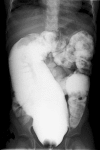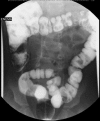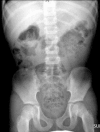Bowel management for the treatment of pediatric fecal incontinence
- PMID: 19830436
- PMCID: PMC2777229
- DOI: 10.1007/s00383-009-2502-z
Bowel management for the treatment of pediatric fecal incontinence
Abstract
Fecal incontinence is a devastating underestimated problem, affecting a large number of individuals all over the world. Most of the available literature relates to the management of adults. The treatments proposed are not uniformly successful and have little application in the pediatric population. This paper presents the experience of 30 years, implementing a bowel management program, for the treatment of fecal incontinence in over 700 pediatric patients, with a success rate of 95%. The main characteristics of the program include the identification of the characteristics of the colon of each patient; finding the specific type of enema that will clean that colon and the radiological monitoring of the process.
Figures










References
-
- US census bureau http://www.census.gov/
-
- Peña A, Levitt MA (2005) Imperforate anus and cloacal malformations. In: Ashcraft KW, Holcomb GW, Murphy JP (eds) Pediatric surgery, 4th edn. W.B. Saunders, Philadelphia, pp 496–517
-
- Lary JM, Edmonds LD (1996) Prevalence of spina bifida at birth—United States, 1983–1990: a comparison of two surveillance systems. MMWR CDC Surveill 45:15–26 - PubMed
Publication types
MeSH terms
Substances
LinkOut - more resources
Full Text Sources
Medical

